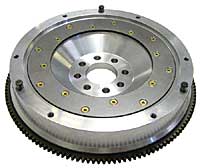In the second section of this book, we were particularly complimentary regarding the MINI Cooper's stock suspension, noting that it will reward a good driver and can be well down the priority list of things to work on for improved performance. Now, with a few days of track time under your belt, or maybe a day or two out on the autocross course, and lots of corners that you have been practicing to go around just right, you may be ready to consider tweaking the suspension a bit for better handling performance.
Once again we’re back to trade-offs. For the average driver, with average passengers, the ability of the car to absorb bumps without rattling the dentures of gran’pa in the back seat is at least as important as how fast the car will get around corners.
As a result, when designing the shocks, springs, and suspension on any car, engineeers are going to err at least slightly on the side of a soft ride. The trade-off is that the car will lean more when going around corners.In moderate corners, as the car leans, that weight transfer is going to take weight off one of the powered wheels, and push the other wheel more firmly against the pavement, causing it to scrub a little bit. Push that car too hard through a corner and that lean could even turn into a roll. Either way, you’re not going to go around the corner as fast as you would if the car didn’t lean so much.
Once again we’re back to trade-offs. For the average driver, with average passengers, the ability of the car to absorb bumps without rattling the dentures of gran’pa in the back seat is at least as important as how fast the car will get around corners.
As a result, when designing the shocks, springs, and suspension on any car, engineeers are going to err at least slightly on the side of a soft ride. The trade-off is that the car will lean more when going around corners.In moderate corners, as the car leans, that weight transfer is going to take weight off one of the powered wheels, and push the other wheel more firmly against the pavement, causing it to scrub a little bit. Push that car too hard through a corner and that lean could even turn into a roll. Either way, you’re not going to go around the corner as fast as you would if the car didn’t lean so much.
 In the interests of improving your potential to get around corners, you may want to think about changing the trade-off, so that the car may not ride as softly going over bumps, but it will lean less going around corners. To do this, you’ll want to consider replacing the springs, upgrading the shocks, adding a rear sway bar, and changing the rear control arms.
In the interests of improving your potential to get around corners, you may want to think about changing the trade-off, so that the car may not ride as softly going over bumps, but it will lean less going around corners. To do this, you’ll want to consider replacing the springs, upgrading the shocks, adding a rear sway bar, and changing the rear control arms.Each of these suspension modifications can be installed separately, if your budget is limited, and they can be installed in the order in which they’re discussed. If you can swing the expense, you can save money and gain maximum improvements in handling, by installing all the components at the same time.








